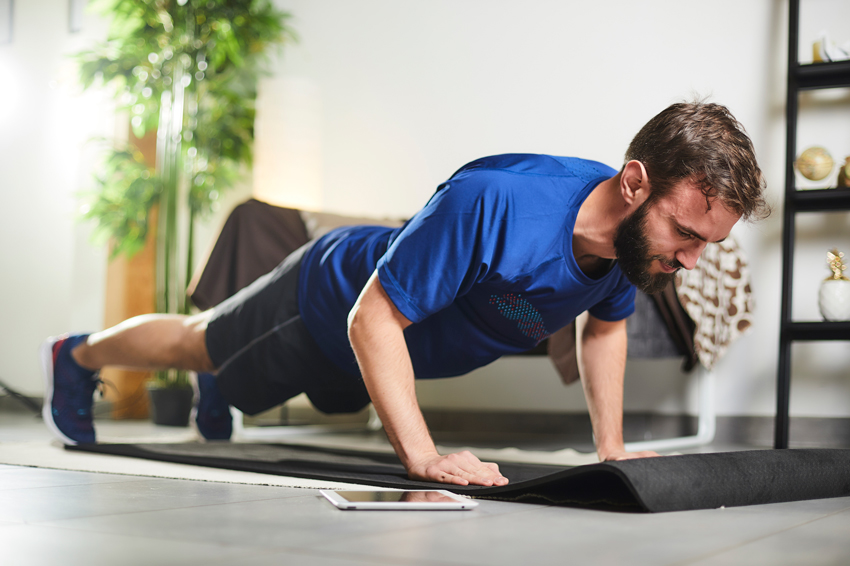One of the core elements of fitness training is progressive overload. This must-use method is what makes it possible for any physically active individual to progress by improving their strength, muscle mass, work capacity, physical conditioning and all of their athletic abilities. Learn more about this technique and how to use it in your FizzUp training cycles from the FizzUp trainer to make your body evolve.
Ever heard of the myth of Milo of Croton? This famous tale is a perfect example of progressive overload. Milo of Croton was a wrestler with several Olympic titles to his name. To most historians, he’s considered to be the greatest wrestler of ancient times. Today, his name is tied to strength and progress.
Milo built strength using progressive overload. He owned a newborn calf and carried it every day. As it grew, Milo became stronger and stronger until the calf became a full-grown bull. By carrying a bull on his shoulders around the Colosseum, he became the strongest man in the world.

The moral of the story is that no matter what your goal is, you need to put a little more physical demand on your body according to your fitness ambition every time you work out in order to make progress. Gradually adding more stress is the very essence of progressive overload. See how Milo started small, then started lifting more and more weight as his calf grew to turn himself into the world’s strongest man?
Here’s an even better example: if you did 10 pull-ups during your last workout and today you do 12, then those extra 2 pull-ups count as progressive overload. You increased your training volume in order to demand more from your body and force it to adapt.
This concept is the key element of building strength, muscle mass and cardiovascular endurance for any fitness goal. Besides improved athletic abilities, progressive overload also stimulates bone, ligament, tendon and cartilage development through the extra stress put on your body and healthy recovery. Added perks include increased blood flow to the areas you work and a better neuromuscular connection.
Progressive overload even correlates to other activities, such as learning a musical instrument or a foreign language. That’s how animal species have been able to evolve, too: by adapting to the demands of their environment from generation to generation. Remember, without turning up the intensity with progressive overload, your body won’t progress.
The goal is to keep stimulating your body using an outside stress that exceeds (hence the term “overload”) the stimulus that it receives regularly in order to “force” it to adapt over time (hence the term “progressive”) by hitting a minimum threshold of difficulty.
The progressive overload method is one of the first basics you learn in exercise physiology. It makes your body overcompensates for the stress of your workout by giving you bigger and stronger muscles.
Progressive overload involves applying a stimulus or a stress (exercise, for example). The human body’s reaction to a training stimulus is what’s called general adaptation syndrome.
Your body responds to stress in three stages:
This explains why you need to include overload in your fitness training and avoid the third stage by using a well-thought-out workout routine and giving your body enough time to recover.
If you’re doing the same workout with the same exercises every day for the same number of sets and repetitions with the same level of intensity, it won’t be long before you start to stagnate. In this situation, your body’s used to the stress so it doesn’t have any reason to adapt.

If progress is what you want, then you must increase one of the variables in your workout routine, such as the weight, frequency, number of sets or repetitions. For instance, if you were doing 3 sets of 10 repetitions and increase them to 3 sets of 15 repetitions, then this new stimulus (or “overload”) will force your body to cope with the extra stress, triggering a physical change like muscle or nerve hypertrophy for increased strength.
In short, you need to gradually increase either the volume, intensity, frequency or the time-under-tension in order to reach your desired goal by using the minimum threshold of difficulty, whether that’s to build muscle or cardiovascular endurance, for instance.
Here are some ways you can increase the stimulus:
There are so many ways you can use progressive overload. The examples above mean more work for your muscles, but that also means they’ll have more potential to progress. All you need to do is simply increase the physical stress you put on your body. By doing so, it won’t have any other choice than to make the improvements needed to adapt to and handle the stress, as long as you let it properly recover.
Your FizzUp program includes this technique that’s a must for your progress. The app brings you structured training cycles based on your fitness level and follows a logical sequence that keeps your body evolving with one workout every other day.

What’s more, the exercises are adapted to suit your ability so that you can reach the minimum intensity threshold you need in order to force your body to adapt. Take a fit man who doesn’t have any problems going from 30 to 40 push-ups. This doesn’t force his body to adapt, but going from 5 to 10 clapping push-ups is a challenge that will build his strength and muscle mass.
Progressive overload is easy: just do more than you did the last time you worked out. As long as you do that as often as you can and let your body recover, you’ll give your body a reason to progress.
But remember, your body adapts in waves. Sometimes, you’ll make significant progress in a single week and other times, you’ll feel like you’re stagnating. If you make small changes to your routine, then you’ll improve over time. Although your progress will go through ups and downs, you’ll gradually get stronger and more fit if you keep making progressive overload part of your routine.
Join the 7 million users already registered on FizzUp
Join us